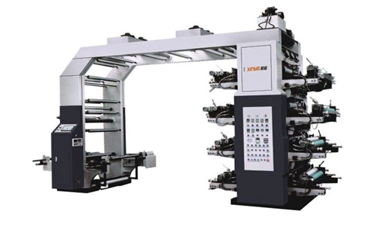 12 Jun 2024
12 Jun 2024
Flexographic printing: Printing is done by transferring ink using a flexible printing plate through an anilox roller. The image and text are raised, and the ink layer is transferred to the surface of the substrate under the pressure of the impression roller.
Digital printing: Digital printing uses digital technology to transfer digital images directly to the printing press, eliminating the traditional plate making process. Using data file control equipment, the colorant is directly transferred to the substrate without the need for film and printing plates.
Application fields of flexographic printing:
1.Packaging printing: Flexo printing is widely used in the field of packaging printing, especially for the printing of soft packaging materials such as plastic film and paper, which can meet the needs of clear pictures and bright colors. It has high production efficiency and low cost, and is suitable for large-scale packaging and printing production.
2.Label printing: Flexo printing has strong adaptability and can realize high-quality printing of curved surfaces, so it is often used for label making. Whether it is a simple design of breathable film, a beautifully printed soft envelope/tetra pak/label sticker, or a varnish coating to enhance the aesthetics of products, flexography can be seen.
3.Commercial printing: Flexo printing is also widely used in commercial printing, such as the production of business cards, leaflets and other commercial printed matter. It can accurately reproduce the colors and textures of works of art, and make pictures and books more visually impactful.
4.Cards and greeting cards: Because of its high resolution and adaptability, flexography is often used to make cards and greeting cards to show delicate graphic effects.
Application fields of digital printing:
1.Personalized printing: Digital printing is more suitable for personalized printing needs. For example, business cards, leaflets, customized gifts, etc. are typical applications of digital printing.
2.Commercial printed products: Digital printing is also widely used in the field of commercial printed products, such as making brochures, posters, manuals, etc.
Flexographic printing is widely popular in packaging, labeling, commercial printing and card making due to its advantages of high definition, high efficiency and low cost; digital printing has great potential in the market of business printing, promotional materials, etc. due to its flexibility, short run and personalized customization.

GET A QUOTE